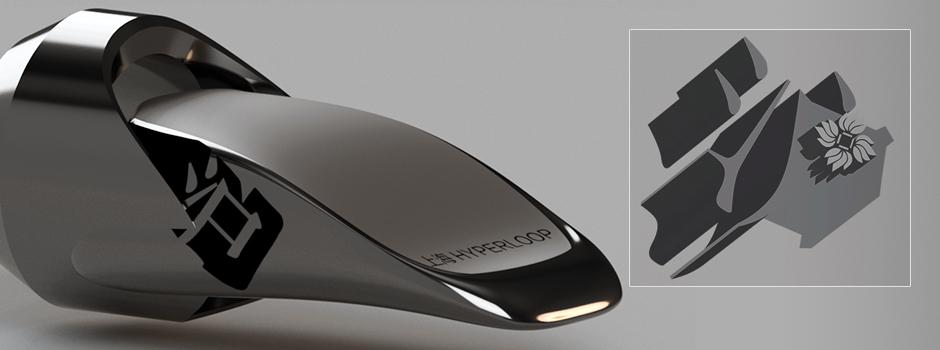Like the idea of teleportation, high-speed ground transport may conjure trappings of science fiction to most, but a team of NYU Shanghai freshmen, sophomores and juniors created a top-level capsule design for a hyperloop -- a near-vacuum tube that would allow high-speed transportation. Invited to the Design Weekend taking place at Texas A&M University, they’ll compete in the SpaceX Hyperloop Student Competition and show off their上海perloop (shang-hai-per-loop) design.
Over the course of three weeks, the team spent many school nights consuming research and MOOC lessons, learning how engines work, planes are built, and cars are systemized. They are a cluster of physics, engineering, interactive media arts, business, neural science, biology, computer science, humanities and mathematics majors. Five members are composing the industrial design for the project, another five are producing the business plan and eight are working on engineering, while many share cross-divisional leadership roles.
“We believe it is this active learning that can make new, fresh connections and epiphanies,” said junior student Michael Lukiman, adding, “We wish to show and inspire others in our community that enough drive and passionate work can pay off, first with this Design Brief, then beyond.”

The opportunity comes from business magnate, Elon Musk, founder of SpaceX -- an American aerospace manufacturer and space transport services company -- who opened a design challenge to university students in considering the transportational hyperloop. Over 700 student teams from all over the world submitted applications to the preliminaries, and the NYU Shanghai team was among the 100 that passed the first round, as the competition’s only team based in China.
The underlying motive is a good one -- a statewide mass transit system that is safer, faster, convenient, less costly, immune to weather, sustainably self-powering and resistant to earthquakes. Visualize a tube over or underground using powerful fans to push air at high speed, with a levitating capsule to reduce track friction and counteract gravity in a low air-pressure environment. In people-sized pods, commuters could potentially be propelled from LA to San Francisco in about 30 minutes.
Over the Design Weekend in January, teams will showcase their design and analysis, presenting research to potential sponsors as a sort of pitch to investors based on what judges have so far seen. The competition carries over to full-fledged pod racing in June, where teams will build their half-scale Hyperloop pod and test them on the subscale test track constructed by SpaceX (inner diameter between 4 and 5 feet; length approximately 1 mile). Resembling a sea-level spacecraft with on-board propulsion, it may use magnetic levitation technology similar to the already real Shanghai Transrapid Maglev -- currently the fastest operating passenger train in the world, topping at 431 kilometers per hour.
“Working with our team's engineering arm has once again allowed me to see the amazing talents of the students that attend NYU Shanghai. I feel so lucky to be in an environment that constantly provides opportunities that turn our wildest ideas into viable innovations that solve real-world problems. We're working with hoverpads. It doesn't get cooler than that,” said sophomore Omer Cohen.
With student innovation accelerating the development of a functional prototype, a better alternative to flying or driving may be within reach after all.
The members of 上海perloop are: (freshmen) Bradford Sunderland, Farrell Dunlap, Robert Prast, (sophomores) Fernando Andres Medina, Haider Ali, Jennifer Ziyuan Huang, Johan Yao, Omer Cohen, Richard Awuku-Aboagye, Siqing Zhang, Tristan Armitage, and (juniors) David Santiano, Kelvin Liu, Michael Lukiman, Richard Huang, Sean Kelly, Shahn Shamdasani, and Usama Shahid.


